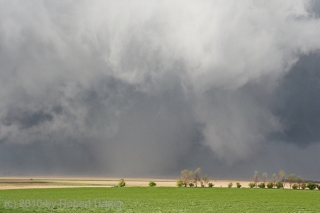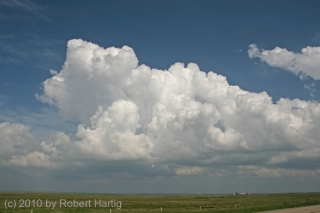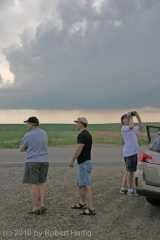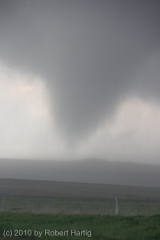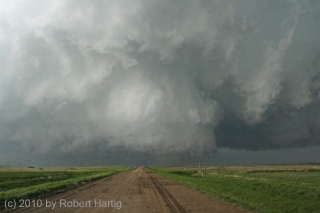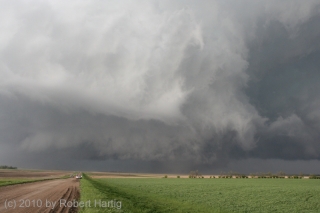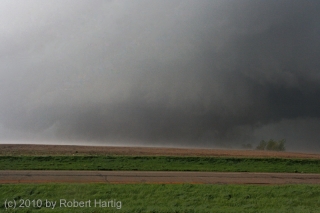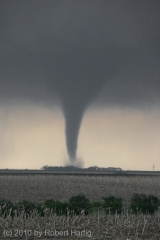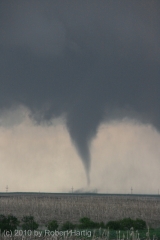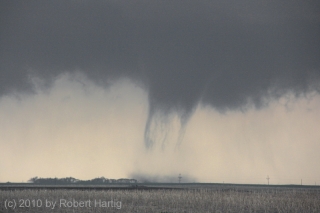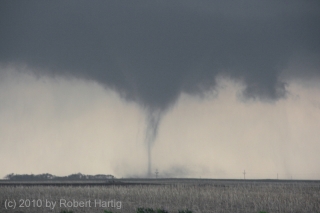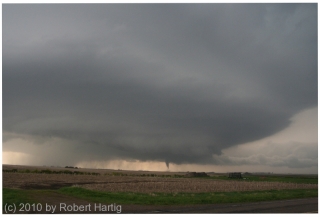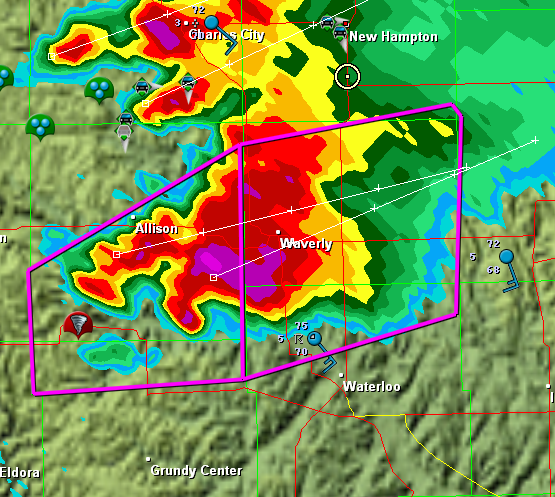Several weeks ago, en route toward a storm chasers’ conference in Minneapolis, my long-time chase partner Bill Oosterbaan and I caught lunch in Parkersburg, Iowa. Five years before, on May 25, 2008, Bill, his brother, Tom, Jason Harris, and I had intercepted a tornadic supercell half an hour after it leveled the southern third of that town, claiming seven lives. It was the second EF-5 tornado recorded using the Enhanced Fujita Scale (the first tornado destroyed Greensburg, Kansas, in 2007), and I was curious to visit the community it had impacted.
As we headed north into Parkersburg, just two signs of the disaster greeted us: wind-torn trees which bore silent testimony to the horror of that grim afternoon, and street after street of new homes and commercial structures. In that 150-year-old prairie town, the delineation between old buildings to the north and brand-new ones to the south was sharp, and it was telling. This town had endured something far beyond a bad windstorm. It had been forever altered by one of nature’s most violent and lethal forces. In just two or three brief minutes, one-third of the town had been swept away–homes leveled, businesses demolished, loved ones lost, bodies maimed, traumatic memories imprinted indelibly in the minds and emotions of survivors, and the history of an entire 1,870-person community dramatically shaped. Henceforth, Parkersburg would be one of those towns whose residents speak in terms of “before the tornado” and “after the tornado.”
As Bill and I walked down the sidewalk toward a family restaurant in the old downtown section, Bill remarked, “I can hardly wait to get out and chase this spring! Man, I hope we get some good storms.”
“Careful,” I said. “Remember where we are.”
Bill understood immediately. “Good point,” he agreed.
It’s so easy for even older, long-time chasers like Bill and me to forget. We’re enthralled with tornadoes and severe storms, we’re passionate about what we do, and we love to talk about it to the point where we lose track of how terribly dark the dark side of our interest can be. But those who have survived that dark side can never forget.
I look forward to an active storm chasing season this year, certainly better than in 2012. But as we chasers begin to feel our blood stir with the approach of spring, let’s bear in mind what we’re dealing with. We’re sometimes glib in our speech, and we say things jokingly or casually that we don’t really mean.
On Facebook and other social media, I run across comments like, “Bring on the EF-4’s!” or, “I hope I see an EF-5.” That’s typical chatter for storm chasers, particularly newer ones. But do you really want to see an EF-5? Remember, the EF Scale is a damage rating, so consider its implications. Saying that you’d like to witness an upper-end-EF tornado is different from saying you hope to see a mile-wide, violent wedge.
I would love to see just such a wedge, or two, or five or more, churning across the open plains this year. Gimme, gimme, I’m a junkie!
But would I like to see an EF-5? No. Not considering it most likely means that neighborhoods have been leveled and people killed. I hope I never, ever witness something as horrible as Joplin.
On three occasions, twice by night and once by day, I’ve tracked tornadoes as they hit towns. Chances are, eventually I’ll see something along the lines of Greensburg, and I’ll have video to show and a story to tell. But that will simply be because I was following the storm, not because I expected or wanted it to do something awful. Even EF-3 and lower tornado damage reflects a terrifying, hugely impactful, and sometimes deadly event for those in the path of the whirlwind. Chasers who witness such destruction inflicted on a community are sobered by it, shaped by it, and sometimes haunted by it.
So as we enter tornado season, let’s be mindful of what these storms can do and have done, year after year in town after town. My enthusiasm for chasing may not be be shared by the waitress who’s serving me lunch in some small Kansas town, who lost her home, husband, and child in a storm.
